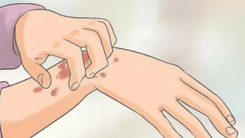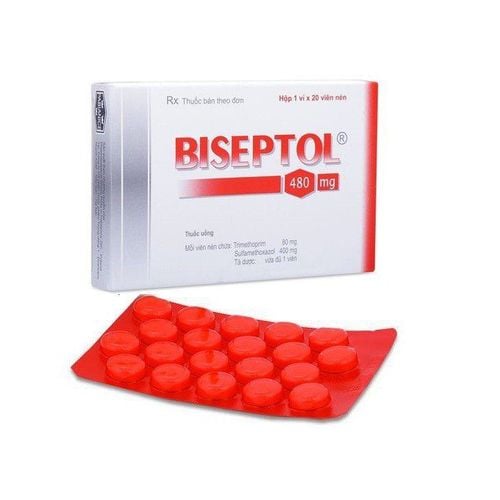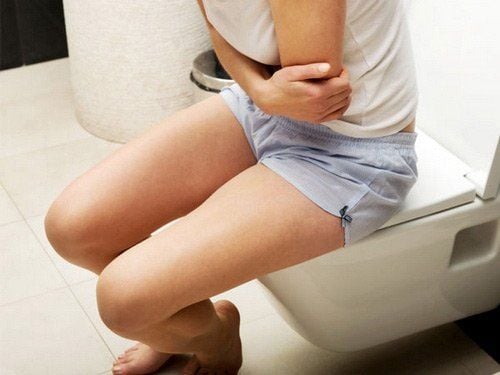Rectal prolapse is a condition related to the anorectal region, causing significant inconvenience and anxiety in the daily life of the patient. So, is rectal prolapse a dangerous condition?
1. What is rectal prolapse?
Rectal prolapse is a condition where the rectum passes through the anal opening and protrudes outside the anus. Alternatively, it can be understood as the rectum slipping out of the anal sphincter. Rectal prolapse is a rare condition, not causing severe complications or complex progression, but it does create many inconveniences for patients, such as anal area discharge, fecal incontinence, and difficulty in bowel movements.
There are 3 types of rectal prolapse:
- Anal mucosal prolapse: This is the condition where the anal mucosa protrudes outside, but the rectum remains inside.
- Rectal prolapse: The rectum protrudes outside, but the anus stays in its original position, creating a deep circular groove in the middle.
- Anorectal prolapse: The rectum prolapses outside, pulling the anus with it, but there is no circular groove between the anus and rectum.
2.Causes of rectal prolapse
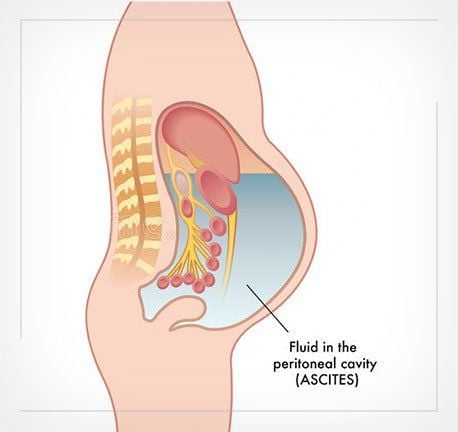
Rectal prolapse is caused by various factors, such as a sudden increase in abdominal pressure leading to diarrhea in children, constipation in adults, or chronic colitis.
Additionally, causes of rectal prolapse include heavy labor, anatomical issues such as a non-adherent rectum, or insufficient support structures behind the rectum, or an excessively long colon. Rectal prolapse may also result from surgical trauma, such as gynecological procedures or pelvic injuries, with women having a higher incidence rate than men.
3. Symptoms of rectal prolapse
When suffering from rectal prolapse, patients begin to exhibit unusual signs in the anal area, such as a mass protruding during bowel movements and then returning to normal afterward. Or, when walking, coughing, standing for long periods, or sneezing, the prolapsed rectum may remain outside the anus.
Additionally, rectal prolapse symptoms may include uncontrolled defecation, rectal bleeding during bowel movements, physical weakness, loss of appetite, fatigue, and discomfort in the anal area.
4. Is rectal prolapse dangerous?
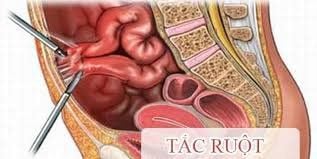
Given the causes and symptoms of the disease, many people wonder whether rectal prolapse is dangerous. Rectal prolapse is indeed dangerous if left untreated for a long time, with some potential risks including:
- Anal bleeding when the mucosa is damaged, causing visible bleeding during bowel movements. The inability of the rectum to retract on its own allows bacteria to invade, causing anal ulcers and pain.
- Intestinal obstruction occurs when the small intestine descends along with the rectum.
- Rectal rupture from severe impact, causing damage and an increased risk of rupture.
- Uterine prolapse in women who experience prolonged rectal prolapse.
5. Common degrees of rectal prolapse
5.1. Rectal mucosal prolapse
The mucosal layer inverts during bowel movements but retracts completely afterward. In this condition, the tissues frequently stretch and lengthen. The mucosal layer excessively inverts beyond normal and cannot return on its own. Eventually, the mucosal glands of the rectum are also pulled. Mucosal prolapse of the rectum includes:
- Prolapse after bowel movements and then retraction.
- Prolapse after bowel movements, requiring manual assistance to push it back.
- Prolapse with slight exertion, such as squatting, walking, coughing, or sneezing.
5.2. Full rectal prolapse
In simple rectal prolapse, only the rectum slips out through the anal canal, while the anal canal remains in place. Rectal and anal mucosal prolapse occurs when both the rectum and anal canal invert outward.
There are four degrees of full rectal prolapse:
- Level 1: The rectum only prolapses with strong exertion during bowel movements and retracts quickly. No systemic abnormalities.
- Level 2: The rectum always prolapses during bowel movements and retracts slowly or needs manual assistance to push it back. Mucosal abrasions cause swelling, the anus is sunken, but no systemic issues are noted.
- Level 3: The rectum prolapses with light exertion and cannot retract on its own. Rectal mucosal glands become necrotic, with scars in some areas, causing loss of anal sphincter control, mental fatigue, mucosal bleeding, and fecal incontinence.
- Level 4: The intestine prolapses continuously, even during walking or standing, and cannot maintain its normal position. The mucosal glands ulcerate, and the sphincter loses strength. At this stage, defecation and urination occur uncontrollably and continuously.
6. How to treat rectal prolapse

Treatment for rectal prolapse involves two approaches:
- Medical treatment using oral and topical medications for mild cases
- Surgical treatment is indicated for severe symptoms. performed through abdominal or perineal routes to address full rectal prolapse.
To prevent rectal prolapse, avoid proplonged constipation and diarrhea, increase intake of green vegetables and fruits, limit spicy foods and greasy foods, and drink plenty of water daily. Maintain proper posture during defecation, avoid sitting too long, and refrain from excessive straining.
Rectal prolapse is a dangerous condition, leading many complications if not examined and treated promptly. Therefore, when you see signs of the disease, you should go to a medical center for examination and treatment.
Currently, Vinmec International General Hospital provides examination, diagnosis, and treatment for rectal prolapse using reputable and modern technology, delivering high results for customers. With a team of highly specialized and experienced doctors, along with excellent medical services, Vinmec offers peace of mind and satisfaction when choosing it for treatment.
To arrange an appointment, please call HOTLINE or make your reservation directly HERE. You may also download the MyVinmec app to schedule appointments faster and manage your reservations more conveniently.



